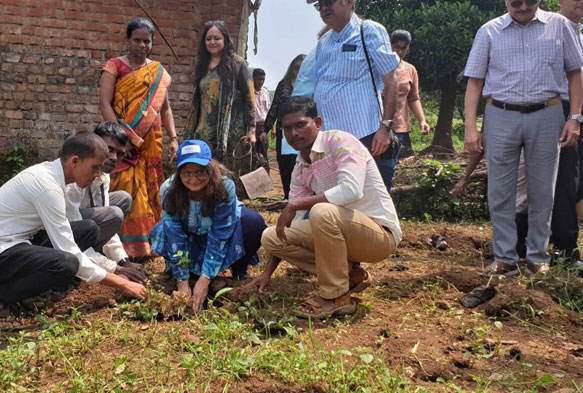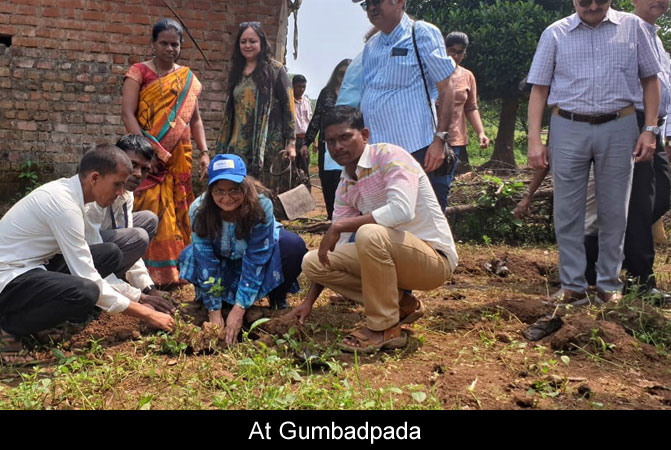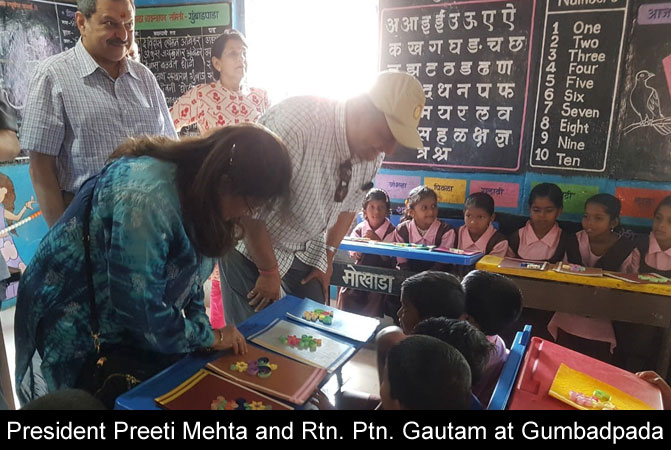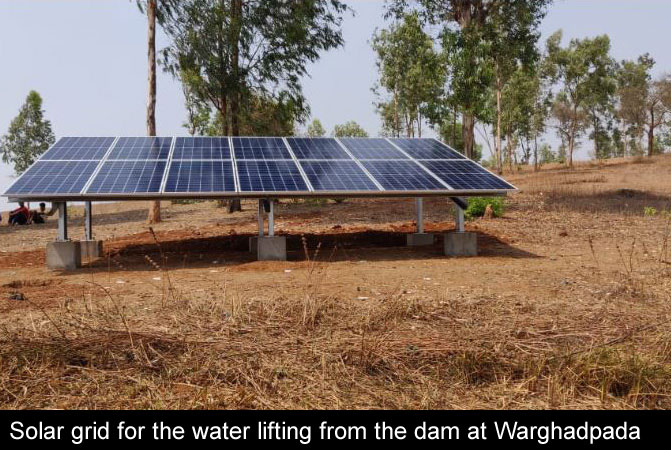
Committee Reports: Environment 2019-2020
Director-in-charge: Rtn. Peter Born
Chairperson: Rtn. Madhusudan Daga
Vice-Chairperson: Rtn. Christopher Bluemel
Committee members: President Preeti Mehta, PP Rtn. Ramesh Narayan, Rtn. SV Prasad, Rtn. Anand Parikh, Rtn. Varsha Daiya, Rtn. Alok Sekhsaria, Rtn. Priyasri Patodia, Rtn. Mudit Jain, Rtn. Rajesh Shah, Rtn. Ptn.
Avaan Vakharia
RCB took the momentous decision to adopt Gumbadpada village, a hamlet about 3.5 hour’s drive from Mumbai (towards Nashik in Maharashtra). The Integrated Rural Development project was carried forward and implemented under RCB’s Environment Committee headed by Rtn. Madhusudan Daga. Solar power is used as a pivot to bring about a five-point rural transformation – impacting health, social security, livelihoods, education and sanitation.
Scenario before project implementation: This village is home to 365 tribals and Dalits and, since generations, farmers are forced, post monsoons, to work as coolies and construction labour in Bhiwandi and nearby towns while their lands lay fallow due to paucity of water.
The children were stunted due to malnutrition and spent most of their nights in darkness due to frequent load shedding. Teenage girls walked barefoot, about four kms daily, to get to school and eventually give up. The women carried multiple pots of water on their heads simultaneously and trudged up and down steep hills several times a day be it under the heat of the burning sun or the slipperiness of the heavy rains.
Project implementation: On October 12, 2019, RCB, along with our partner in this project ‘Chirag Rural Development Foundation’ and their on-ground partner Diganta Swaraj Foundation, brought succour and hope to these villagers and changed a grim situation to one of hope and a better tomorrow.
Solar power through high quality solar panels installed to provide power for:
(i) running the submersible pump that pumped water up a kilometer to the tap stations in the village;
(ii) providing home lighting and also run fans in schools and anganwadi;
(iii) providing power for ‘e-learning’ facility; and
(iv) street lights for social security.
The water from the river/ water body will provide:
(i) irrigation water for agriculture; and
(ii) water for domestic use and drinking water through community taps. The villagers participated through hard labour ‘Shramdan’ in invaluable man hours to lay pipes, electricity cables and construction work and ‘Bhu-daan’ by making available part of their land for the project.
The project also entailed building ‘common toilet blocks’ for villagers. The Prime Minister’s dream of ‘Nal se Jal’ was realised by us in one remote village before our very eyes and, as Pratibha Pai, the founder of Chirag Rural Development Foundation, said, “These villagers seemed to be in some kind of a time warp… RCB has actually fast forwarded their lives to contemporary times with this intervention!
This time around, domestic waste water was recycled into soak pits that helped villagers cultivate kitchen gardens for captive consumption, ensuring that water goes back into the water table and also benefits villagers.
Scenario after project implementation: The solar integrated village development has been a success in the context in which it was conceived. Villagers are happier, healthier and feel more secure. Children are happy to attend school and better school performance is expected. The water filter has tremendously reduced health issues persistent in the village.
Public toilets are used effectively now that tap stations provide water that is required. Thanks to the kitchen garden, the families get vegetables at no extra cost at home in this time of difficulty. Farmer incomes and farm productivity are on the rise – flowering of mogra, cashews, etc and yield from fruit trees, will lead to a further increase in farmer incomes. None of the farmers migrated as they were tending to their land and have therefore been safe from the Covid-19 exposure!
The Environment Committee therefore, with the support of the Board of Directors, has undertaken two more projects on the same lines to cover nearby villages of Warghadpada, Ghodichapada and Mukundpada. Work has begun for both projects and is expected to be completed a week from the lifting of the lockdown for Warghadpada and four weeks post-lockdown for Ghodichapada and Mukundpada.
Warghadpada is a group of five settlements spread out in different directions, and our intervention will impact the lives of more than 485 villagers belonging to tribal communities and is a poorly electrified village which experiences load shedding for more than 12 hours a day and during monsoons there is no electricity at all, and the source of water is a 1.5 km trek away.
Ghodichapada and Mukundpada, which are remote, disconnected hamlets, are in a much worse situation. Our intervention here will impact the lives of more than 500 villagers belonging to tribal communities.




